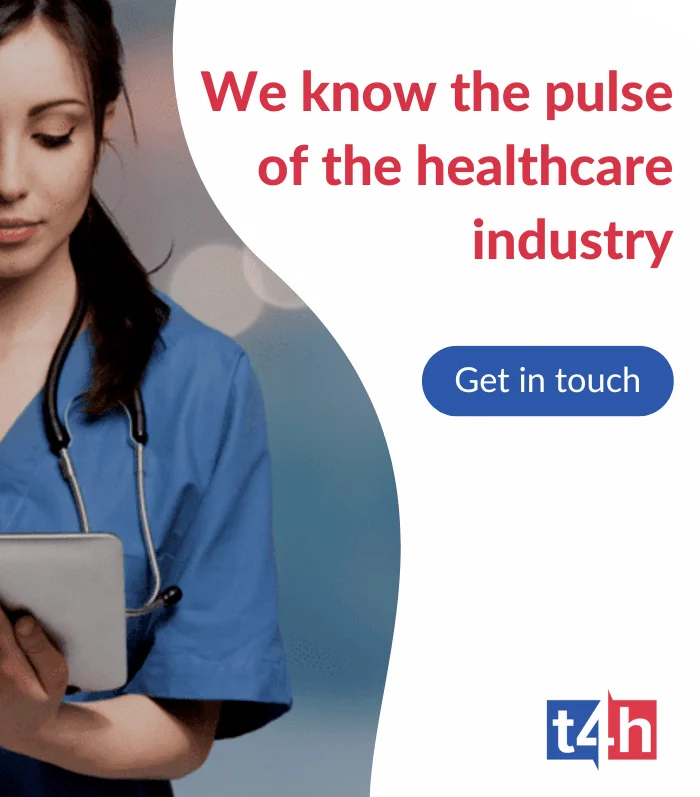7 min read

Chloe Mumford
There’s been a lot of discussions lately about the need for reforms in the healthcare industry. Most notably, the adoption of new technologies has become a priority with maximum benefits for minimum effort.
Our society relies heavily on technology, and while the old ways ‘work’, they could be better. We all know how much technology directly impacts our day-to-day, but it can also save lives. Consequently, healthcare providers need to adopt more technology that will improve overall patient care while fulfilling workforce requirements. In this article, we provide tips on how healthcare providers can embrace technology to benefit their organization, their patients, and their staff.
What impact has technology had on healthcare?
To say technology is hugely beneficial to healthcare would be an understatement. It plays a part in helping to diagnose patients, minimize errors, protect patient privacy, discover new diseases and how to treat them. It also allows healthcare workers to stay organized, and save time by having appointments via video call.
The online communication that occurred between providers and patients was a time and cost-effective choice. It allowed for much smoother communication and a faster turnover of patients, which patients prefer.
A study by Accenture claims that 68% of all patients expect to be able to book medical appointments online, up 17.2% from 2016. In fact, in a study by Kyruss, over half of the participants said they’d switch to practices that let them book appointments online.
So, it would be highly impactful for providers to adopt appointment booking systems and keep online appointments, to save time and money on missed appointments.
Not only does it do all that, but once patients have left the hospital it can help monitor them and find ways to improve their help with devices such as Fitness Trackers. A study shows that 1 in 5 Americans currently wear a fitness tracker such as Fitbit or a smartwatch. This is also predicted to grow by a further 20% by 2025. They’re a popular device and are proven to massively improve patients’ lifestyles. Studies have shown that 10% of people who wear pedometers have improved their lifestyles as a result of the data. Prescribing a Fitbit to your patient could help to improve their overall health and consequently result in fewer appointments for related illnesses.
So what can healthcare organizations do to make improvements in patient care and better fulfill workforce needs with the help of technology?

A study shows that 1 in 5 Americans currently wear a fitness tracker such as Fitbit or a smartwatch.
Be up to date on medical apps to suggest to patients
As there are over 10 million mobile healthcare apps, it’s impossible to familiarise yourself with them all . However, providers need to get an understanding of a select few, that would benefit certain patients. For example, prescription apps can improve a patient’s access to medication. Sleep tracker apps can help patients to monitor their sleeping patterns and habits. Pedometers can help to set targets for exercise. Each of the 10 million apps available could help a patient monitor and adapt their lifestyle with the principal benefit of improving their overall health.
This benefits healthcare providers because if medical apps improve patients’ health, then they’re less likely to need an appointment. This in turn helps to combat the rapidly increasing patient-to-nurse ratio. Additionally, if the provider has an app that allows patients to search for their symptoms to get a rough idea of the diagnosis they may receive, it could prevent patients from contacting the providers when it’s not required.

We know the pulse of the healthcare industry.
Top healthcare talent on demand
Use AI to detect outbreaks of disease
Artificial Intelligence is used to detect global infectious diseases by tracking trends in data to then analyze and predict the spread of disease and infection rates. As a result, hospitals and other healthcare providers would be able to receive an early warning so they can prepare.
From a staffing POV, providers can better manage their workforce by hiring travel nurses or other contract workers when required. In this way they will be prepared to contract more travel nurses to ensure their permanent staff doesn’t become overwhelmed. Additionally, it allows the hospital to understand what equipment or tests they may need to combat the incoming disease.
Using drones in healthcare
This is an interesting one that not many healthcare providers consider. It’s now possible to send drones to remote areas where healthcare is less accessible, transporting medicine or blood samples to different places. In the U.S., drone technology is specifically being used to carry blood over the Arizona desert, where it can keep the blood cold for the 160-mile journey. There are clear benefits from this type of technology because, if the blood is being tested for a deathly illness, then it’s crucial that it is transported quickly and safely. Surely, then, the outcome is a quicker treatment for the patient.
Final Thoughts
It’s clear that healthcare providers can benefit from involving more kinds of technology in their business strategy, helping both staff and patients. In fact, there are so many technologies being developed that maybe one day, there will be less need for healthcare staff and patient care won’t suffer for it.
For the time being, current technologies can offer patients not only more efficient care but also create a better work environment for healthcare staff. The end goal is to reduce the patient-to-nurse ratio and, with the current outlook for the U.S. healthcare industry – a looming recession and continued staffing shortages – healthcare providers have the most to gain and the least to lose from investing in technology.
Related articles

Talent Trends in Healthcare 2024: Navigating the Evolving Landscape
Talent ManagementTalent Trends in Healthcare 2024: Navigating the Evolving Landscape7 min readThe healthcare industry, a cornerstone of societal well-being, finds itself at the intersection of transformative changes. Technological innovations, shifting patient...

How can travel nurses help the healthcare staffing crisis?
Healthcare staffing crisis unwrappedWhat is the healthcare staffing crisis?The staffing shortage has deteriorated further as a result of COVID-19. Healthcare workers are quitting at drastic rates, putting a strain on the industry. It has led to hospitals struggling to...
Talent4Health awarded Health Care Staffing Services (HCSS) Accreditation from The Joint Commission
Wilmington -USA—October 6th, 2021– Talent4Health has earned The Joint Commission’s Gold Seal of Approval® for Health Care Staffing Services (HCSS) Accreditation by demonstrating continuous compliance with its performance standards. The Gold Seal is a symbol of quality...


